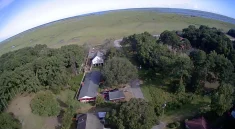Charleston Market Report reports a Charleston retail vacancy rate of 3.26% in Q2 2025, a level that is tightening supply and pushing rental rates higher across core shopping corridors.
Charleston retail vacancy rate hits tight 3.26%
The Charleston retail vacancy rate at 3.26% signals an extremely constrained market for both national and local tenants seeking space.
With fewer options available, retailers face longer search timelines and tougher negotiations. Landlords gain confidence to hold firm on asking rates and reduce concession packages.
However, this low vacancy is not uniform across all submarkets. Prime corridors in historic downtown, Mount Pleasant, and key suburban nodes see even tighter availability than the metro average.
Meanwhile, older strip centers in less trafficked locations retain slightly higher vacancy, creating selective opportunities for value-focused tenants.
Limited supply drives rents higher
Landlords are using the Charleston retail vacancy rate as leverage when setting asking rents for well-located assets.
In addition, stabilized centers with strong tenant mixes and parking are trading at premium rents. Retailers targeting these assets must sharpen their pro formas and sales projections.
New construction remains limited by rising costs, zoning constraints, and slow approvals. As a result, rent pressure intensifies on existing stock as demand spills into second-generation space.
On the other hand, owners of older properties are investing in façade upgrades, outdoor seating, and signage packages to justify higher rates and attract stronger brands.
Demand drivers behind the tight market
Population growth and strong household incomes underpin the low Charleston retail vacancy rate in Q2 2025.
Tourism continues to reinforce retail demand, especially for food, beverage, and experiential concepts. Visitors drive foot traffic that supports higher sales volumes and, therefore, higher sustainable rents.
Meanwhile, residential development near established retail nodes introduces new daytime and evening customers. Tenants who capture both tourist and neighborhood spending show the strongest performance.
As a result, categories such as fast-casual dining, boutique fitness, medical retail, and service-based concepts are expanding quickly where space can be found.
Submarket performance across Charleston
Downtown King Street reflects the lowest Charleston retail vacancy rate, with most blocks effectively fully leased and long waitlists for prime storefronts.
Mount Pleasant continues to draw national brands and high-end local operators, supporting strong rent growth in grocery-anchored centers and lifestyle projects.
In addition, West Ashley and North Charleston show improving fundamentals, as tenants priced out of downtown and Mount Pleasant migrate to more affordable options.
Suburban corridors near new housing starts experience renewed interest from discount retailers, daily-needs tenants, and healthcare users seeking convenient access to growing neighborhoods.
Read More: Global retail real estate outlook and investment trends 2025
Tenant strategies in a low-vacancy environment
Retailers must adjust their site selection strategies to compete in a market with a historically tight Charleston retail vacancy rate.
Prospective tenants are engaging brokers earlier, expanding acceptable trade areas, and considering non-traditional spaces such as mixed-use ground floors.
As a result, many brands are more flexible on store size, configuration, and co-tenancy, provided visibility and access remain strong.
Negotiation dynamics also shift. Tenants increasingly agree to longer terms, higher base rents, and more modest tenant improvement allowances in exchange for strategic locations.
Nevertheless, creditworthy tenants still command attention from landlords, especially in centers seeking an improved merchandising mix.
Implications for landlords and investors
Owners benefit from a low Charleston retail vacancy rate through stronger pricing power, healthier tenant rosters, and compressed downtime between leases.
Because demand exceeds supply in several corridors, investors are targeting well-located strip centers, grocery-anchored assets, and urban street retail.
Cap rates for stabilized assets may compress further as more capital chases limited inventory. However, rising interest rates could partially offset this effect.
Value-add investors see an opportunity to reposition older centers through redesign, re-tenanting, and amenity enhancements that align with evolving consumer habits.
In addition, mixed-use redevelopment that blends residential, office, and retail remains attractive where zoning and infrastructure support higher density.
Development pipeline and future supply
Developers are watching the Charleston retail vacancy rate closely as they evaluate new projects and phased expansions.
Construction costs, financing challenges, and entitlement timelines still delay some speculative projects. Therefore, the near-term pipeline remains constrained.
After that, select infill and suburban projects are expected to deliver new square footage, particularly in high-growth residential corridors.
However, many of these projects already have significant pre-leasing, which limits the amount of truly available space hitting the market.
As a result, even as new supply comes online, the overall balance may remain landlord-favorable through the next several quarters.
How to navigate Charleston retail vacancy rate trends
Market participants who understand the Charleston retail vacancy rate can make better strategic decisions in Q2 2025 and beyond.
Retailers should run detailed sales forecasts and occupancy cost analyses before committing to escalated rents in tight corridors.
Landlords must balance rent growth ambitions with long-term tenant stability, ensuring that occupancy costs remain sustainable.
Investors should focus on assets with durable demand drivers, strong demographics, and realistic mark-to-market rent potential.
For deeper insight, stakeholders can review this internal snapshot: Charleston retail vacancy rate and compare it with current leasing conversations on the ground.
Ultimately, the Charleston retail vacancy rate at 3.26% underscores a competitive, resilient market where informed strategies, disciplined underwriting, and proactive leasing will determine who benefits most from continued rent growth.



